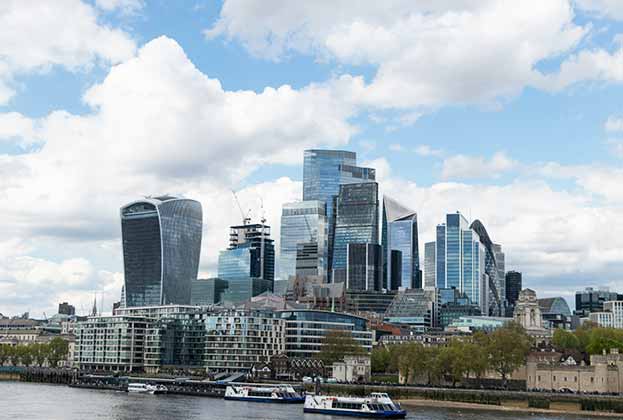After the roller-coaster of the last two years, it seems foolhardy to try to predict the course of the UK’s real estate markets in 2022 in any detail; the situation remains very much in flux with the ramifications of Covid-19 still unfolding. That being said, it is possible to draw some broad conclusions on the direction of travel, extrapolating on what we’ve already experienced and the macro trends that continue to drive change in how we approach and use commercial property.
With the caveat that very little is certain, here are my five forecasts for commercial this year:
1. Investment in UK assets by Middle Eastern and Asian investors dropped dramatically in 2021, stymied by onerous travel restrictions. While volumes by European and North American buyers compensated for this, this year we expect to see these buyers return, deepening the pool of prospective bidders and supporting values on prime buildings both in London and the regions.
2. This renewal in activity by investors from the Middle East and Asia, given their predilection for the safest investments, will cement demand for risk-off assets, such as London offices and logistics. For those fond of a little more risk (and the accompanying returns), value-add opportunities, especially in London offices, some regional office markets and again in logistics look attractive. With a severe lack of Grade A energy-efficient offices in many key regional cities, and these being top of occupiers’ wish lists, development plays in this area may be hard to resist.
3. It’s not just occupiers scrutinising sustainability: developers, lenders and investors have largely all accepted the carbon neutral challenge is too big to ignore, but that this offers opportunity. Not everyone can or will embrace it: 2.5 billion square feet of UK retail and office space requires upgrading by 2030; government will need to force change where investment is not cost-efficient to owners and occupiers. But elsewhere expect further big sustainability announcements, improvements in monitoring, reporting, and the sharing of best practice, and more scrutiny of performance.
4. How do I reconcile my forecast of development plays for regional offices being popular, and risk-averse international investors continuing to target offices, with the continued ambiguity about long-term office use? While 2022 should see an increase on the typical 25 per cent office occupancy levels in 2021, agile working is here to stay. This will affect demand for space, particularly for lower grade stock and offices located in less accessible locations. In the best markets, however, the fall in need should be compensated for by rising headcount and occupiers wanting more space per capita.
5. The stage is set for retail to make a comeback in 2022. While retail averaged a total return of -8 per cent in 2019, compared to +7 per cent on industrial, the next five years will see capital values rise in select parts of retail, while conversely growth will slow in industrial. The higher income return available from some retail will mean that by 2026 we predict there will be less than a 100 basis point spread between the average total return on retail and industrial.
But ‘average’ hides a lot: there will be a much wider spread between the best and worst retail than industrial. Retail warehousing remains a safe bet, and if you own one of the minority of high-rated ESG-compliant retail assets, expect calls from global retailers.





.jpg)

.jpg)


